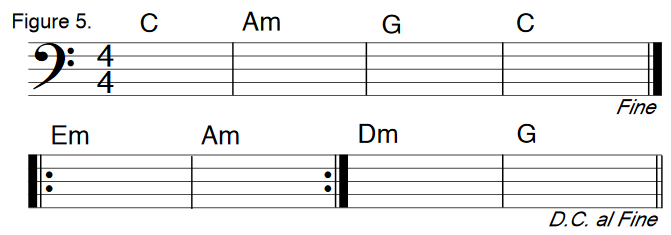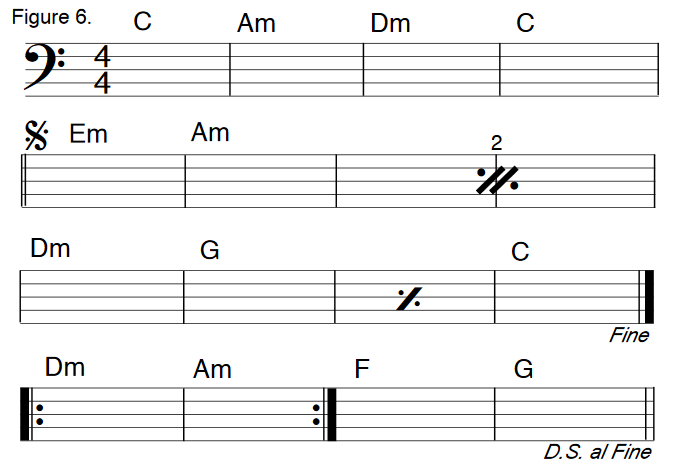How To Make a Short Song Long
There are many "direction signs" in music which enables the bass player to make a short song long.
This lesson will cover the most common signs of direction - the repeat signs.
The one bar (measure) repeat sign tells you to repeat the previous measure, one time before moving on to the next bar. Figure 1.

The two measure repeat sign tells you to repeat the previous two bars, one time before moving on to the next bar. Figure 2.

The double dot repeat sign tells you to repeat the music "between the dots" one time before moving on to the next bar.
Notice that only five bars are written, but eight bars are played. Figure 3.

Da Capo is an Italian term which means "the head". When a song requires you to play all or part of the music again from the beginning,
the letters D.C. are placed below the staff to indicate that you are to "go back to the beginning and repeat". Figure 4.

Fine (fee-nay) is another Italian term that simply means "the finish".
Fine is placed where you actually stop playing, after you have followed all the other previous repeat signs.
Fine may be found anywhere within a song and will often be added to others signs, such as D.C. al Fine, which means "go back to the beginning
and play to the finish". Figure 5.

Dal Segno is an Italian term which means "from the sign". The letters D.S. are used when a song is repeated from someplace other than the beginning.
The segno ( ) is placed at the bar where you are to go back and from there begin repeating.
D.S. al Fine means "go back to the sign and play to the finish". Figure 6.
) is placed at the bar where you are to go back and from there begin repeating.
D.S. al Fine means "go back to the sign and play to the finish". Figure 6.

There are many more repeat signs which we will explore in future lessons, but for now,
have some fun repeating yourself...I’ll be listening, I’ll be listening, I’ll be...
Return to Proficient Lessons